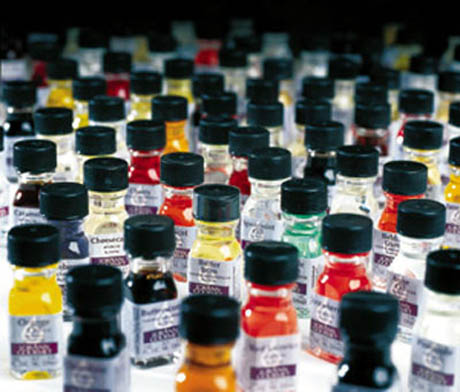 Are Natural Flavors Something You Want To Eat?
Are Natural Flavors Something You Want To Eat?
The other day a friend stopped by for a visit and brought me a store bought tea. I never shun such kindnesses because for some it could be seen as incredibly rude. She was very proud of herself as she pointed out that its label read “No Preservatives and Real Sugar”. It was even in capital letters just like that. (The company obviously wanted me to notice this.) What I didn’t see was an organic seal or a seal that said Non-GMO. But, I didn’t want to be rude so I did what any good friend would do. I smiled, thanked her, and drank it. She was very sweet to make the effort. When she had gone I turned the bottle around to read the actual ingredients. There were only 7 ingredients and the first one was water. Overall she put forth the effort and didn’t do too bad. But one of the ingredients was “Natural Flavors” – What is Natural Flavors? This caught my attention and since it’s in many other products I wanted to know more about it.
How Natural are Natural Flavors?
Dirt is natural, bugs are natural, and tree bark is also natural. I have no desire to eat any of them. I confess I have eaten certain bugs, but it was in the name of setting a good example for my children at a science fair. Meal worms are crunchy and actually taste nutty but leave a popcorn kernel feel in your mouth. Once I’d discovered that crickets taste like shellfish I was done. But do I want to constantly consume food that I assume is good for me without doing any research? NO! In my research I fell upon some interesting information about how the FDA actually defines natural (more by what it is not, rather than by what it is). For example did you know the FDA understands that human hair, duck feathers, genetically modified corn derivatives, and shellac are all seen as natural? That’s weird. But they wouldn’t include those things in our food…right? Wrong! The next time you go to the market to buy a loaf of bread, look for cysteine. Cysteine is considered a natural flavor. It is a dough conditioner that makes your bread nice and fluffy. It is also made from the human hair and duck feathers previously mentioned. Erin Shaw with Organic Authority reminds us that 60 Minutes did a show about natural flavors a while ago. They brought up the interesting fact that often companies that produce vanilla and raspberry flavors can list it as all-natural; even though it comes from the anal gland of a beaver. They sometimes call it natural flavors or they will list it as castoreum. It’s in everything from ice cream to muffins. Another ingredient to look out for is hydrolyzed soy protein. It doesn’t sound too bad? It is actually just MSG! So is autolyzed yeast extract! Aspartame, an artificial sweetener, can also be labeled as a “natural flavor”. The crickets are looking tastier!
You Want The Truth!
When it comes right down to it, what you want is full disclosure! We want to know what these ingredients are. Companies like Monsanto, who is suing Vermont over this very thing, are saying that it is a manner of free speech to not have to fully disclose ingredients. In reality it is just another way to confuse and deceive the consumer. You want to be healthy and you want only the best for your loved ones, so why should companies be allowed to hide what you are really putting into your body? Stand up for your rights by learning as much as you can and supporting local organic farmers. Cook from scratch as much as you are able. Search your cupboards and shelves and purchase products that you know you can trust – like iGOZEN!
Applications and Resources for “Natural Flavors”
- Check out Bruce Bradley’s article that lists some other mystery natural ingredients and what they really
- Go to Natural News for more information on so-called “natural” and what it can do to your body
- Find out how the EWG rates your favorite food or beverage
- Read more about the lawsuit concerning Vermont farmers (and ultimately all farmers and consumers!)
